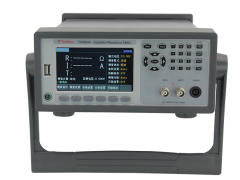Newest
How to judge whether the accuracy of the direct current resistance tester in Changzhou Tesco meets t
To determine whether the accuracy of the direct current resistance tester meets the requirements, the core is to verify through "standard calibration comparison, function status verification, and actual application verification" three dimensions, ensuring that it covers the instrument's performance and actual usage scenarios. The specific method is as follows:
1. Core Basis: Calibration Comparison of Standard Instruments
This is the most direct way of judgment, which requires a standard resistance box that has been calibrated by a metrology (the range covers the test range of the instrument), and verify it by segments according to the range:
Select 3 key values (the start, middle and end of the range) in each decade of the instrument's common range (e.g. 0-200mΩ, 0-20kΩ), such as 10mΩ, 100mΩ, 200mΩ in the low resistance decade.
After the four-end wiring, the instrument is set to the corresponding test current (use large current for low resistance and small current for high resistance), measure and record the data, and calculate the relative error (| measured value - standard value |/ standard value ×100%).
If all gear errors ≤ instrument nominal accuracy (such as ±0.1%, ±0.5%), then the accuracy meets the requirements; if the error of a certain gear exceeds the standard, the accuracy does not meet the requirements.
2. Basic Assurance: Verification of Instrument Functions and Calibration Status
Check the calibration report: confirm that the instrument’s most recent calibration is within the valid period (usually 1 year), and that the report shows that the accuracy at all ranges is acceptable, which is the basis for meeting accuracy specifications.
Self-test function: Start the self-test function of the instrument (some models support), check the stability of the constant current source output (if set to 1A, the clamp meter measures the deviation ≤ ±2%), voltage sampling circuit (short-circuit the voltage end, the display is close to 0V), and functional anomalies will directly affect accuracy.
Three, Practical Verification: Result Comparison in Application Scenarios
Comparison of known samples: Use samples with known accuracy (such as standard wires, calibrated motor windings), measure with the instrument to be inspected and the "calibrated and qualified reference instrument" respectively, and the deviation of the two results ≤ 1/3 of the accuracy of the reference instrument, it is considered that the accuracy meets the actual use requirements.
Multiple measurement consistency: Perform 3-5 consecutive measurements on the same sample, if the values fluctuate ≤ instrument resolution (e.g., if displayed 0.123Ω, fluctuation ≤ 0.001Ω), it indicates that the instrument output is stable and the accuracy is reliable; excessive fluctuations cast doubt on the accuracy.
Do you want me to help you organize a checklist for the precision judgment operation of the direct current resistance tester, so that you can perform the step-by-step practical operation verification? What are the important roles of the die casting chain in the industrial field?
What should be paid attention to when installing the scraper conveyor scraper chain?



